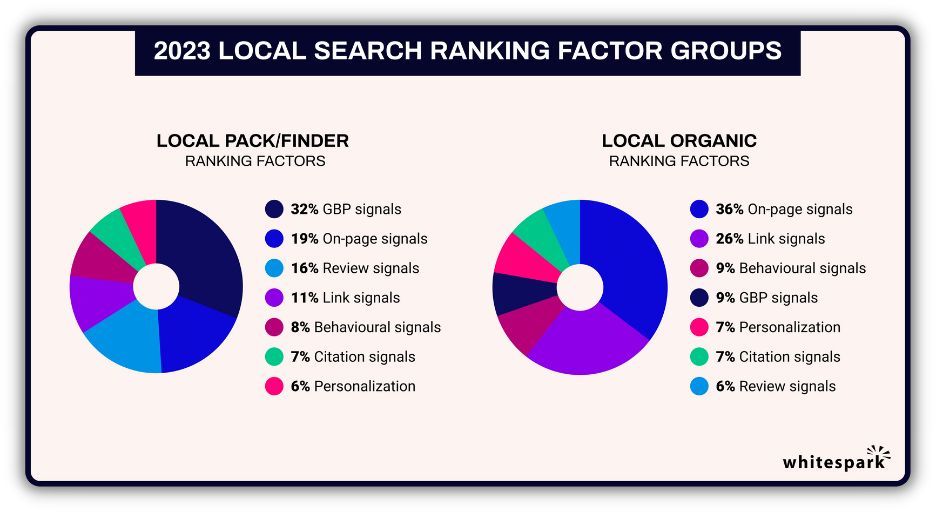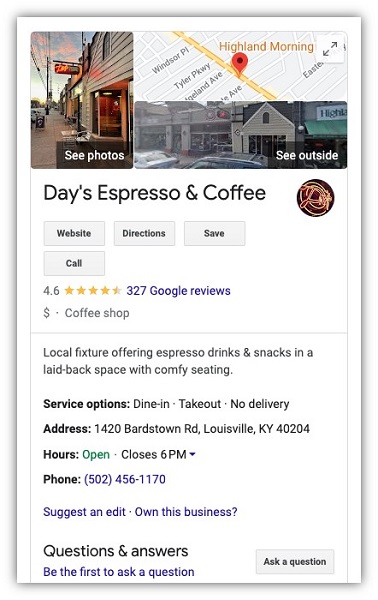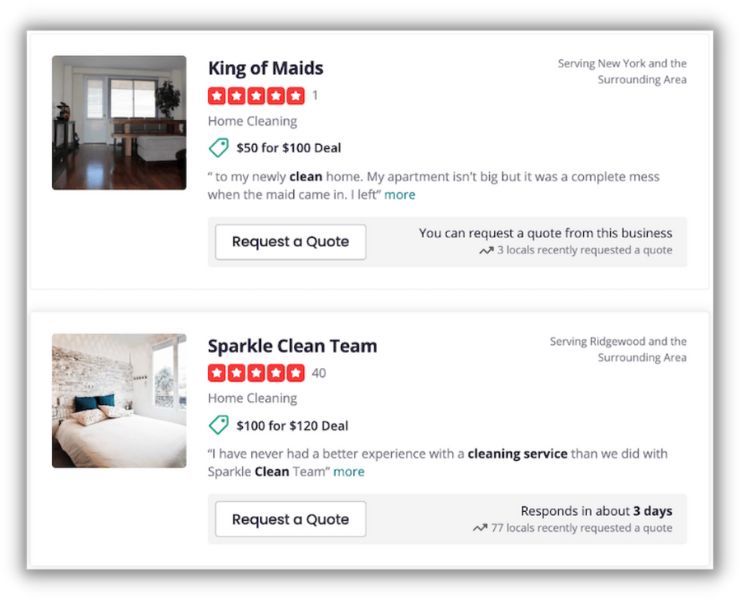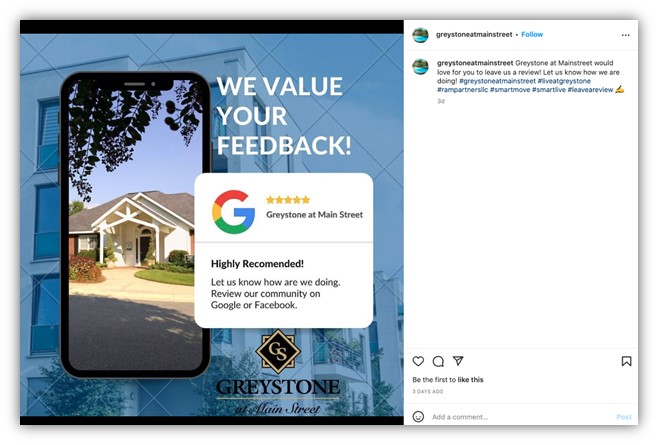PPC
5 Easy Local Citation Building Tips to Boost SEO Fast

As a small business owner or marketer, you know that a strong online presence is key to attracting customers and making more sales.
With billions of searches happening on search engines every day, it’s crucial to ensure that your business is not only visible there–but stands out.
One of the most effective ways to improve your business’s visibility and drive more website traffic is by building local citations.
By doing so, you’ll increase your chances of appearing in local search results and driving more attention to your business. And with more attention comes more sales–it’s that simple.
Here, we’ll discuss why local citations are essential for small businesses and provide five simple tips on how to build them effectively (and quickly!).
By the end, you’ll not only have a better understanding of how local citations can benefit your business, but how to acquire them and get in front of more would-be customers on the first page of search results.
What are local citations?
Local citations are online mentions of your business that include your name, address, phone number, and other relevant information such as customer reviews and business hours.
They can come from a variety of sources, including directory listings, social media platforms, review sites, blogs, and news articles.

Local citations are essential for small businesses as they can significantly improve local SEO.
Search engines like Google and Bing use local citations to verify the accuracy of your business information and to determine the relevance and authority of your business in relation to the local community.
The more citations your business has, the more likely it is to appear at the top of local search results, which ultimately helps drive more traffic to your website.
Local citations can be grouped into three main categories:
- Local listings
- Data aggregators
- Industry-specific/niche sites
Local listings are directories and websites that focus on a particular geographic area, such as Yelp, Yellow Pages, and Google Business Profile.
Data aggregator networks, such as Neustar Localeze and Data Axle, for a small fee, distribute your business information to a network of other sites and directories. BrightLocal offers a service that submits to five major data aggregator networks, making this painless.
Finally, industry-specific or niche sites are sites that publish listings that are directly relevant to businesses in a specific industry, such as Zillow for real estate agents or Avvo for lawyers.
Why is local citation building important?
Here are a few reasons building local citations is so important for businesses.
Helps with SEO
Citations play a crucial role in local SEO by communicating to search engines the legitimacy and prominence of your business in your area.
For example, anyone could claim that they’ve been in business doing lawn care in a certain city for multiple years, but without proof, why should they be believed?
By adding citations across the internet in the forms of listings and reviews, it convinces Google that you’re worthy of them ranking highly when someone in that area searches for their lawn care needs.
Consistent and accurate information about your business across multiple sources establishes trust and credibility, improving your search engine rankings and visibility in the search that will drive traffic to your website.
According to one study, citation signals account for 7% of local search ranking factors.

Therefore, small businesses that want to show up in local search results and attract more customers must ensure they have accurate and consistent citations. It’s worth the effort.
Build trust with prospective customers
Accurate and consistent citations can also help build trust with potential customers, increase your credibility, and establish your business as an authority in your industry.
People trust reviews as much as they trust personal recommendations. So by monitoring your review sites and encouraging existing customers to leave you feedback on these sites, you can sway potential customers to try your business.
Increase visibility for your business
Building local citations can also help you increase visibility for your business, not only by improving your SEO, but also by getting your business listed and displayed on more sites and in more locations online.
For example, by building local citations for your business on directory listings, you can attract customers who use those sites, apps, and maps to discover new businesses. Similarly, if you built local citations on community news sites, you can reach more customers who are using those sites as a resource for finding new businesses.
By identifying the right local citations for your business, you can increase your chances of getting found in more places online by your potential customers.
Types of local SEO citations
Local citations can be classified into two main categories: structured and unstructured citations.
Both types of citations can help improve your local search rankings, but they differ in terms of their format and where they appear online.
Structured citations
Structured citations follow a specific format and are found on websites like local directories and review sites. They include information like your business name, address, phone number, and website URL. These citations are often referred to as NAP citations because they include your name, address, and phone number.
Examples of structured citations include Google My Business, Yelp, and Yellow Pages.

Structured citations offer a consistent format for your business information, which in turn help improve your local search rankings. They also provide valuable backlinks to your website, an important local SEO ranking signal.
However, they can be time-consuming to create and may require payment for a premium listing on some directories.
Unstructured citations
Unstructured citations, on the other hand, are mentions of your business that don’t follow a specific format and can appear on a variety of websites, such as blogs, news articles, and social media platforms.
Examples of unstructured citations include mentions of your business on social media platforms like Twitter or Instagram, blog posts, and news articles.

This article serves as an unstructured citation for this restaurant
Unstructured citations are more flexible than structured citations and can also help improve your local search rankings.
However, they may not always include all of your business information, and they can be more difficult to track, implement, and monitor.
There’s also the risk that an unstructured citation might get your information wrong, creating a headache for your prospective customers trying to get in touch with you.
In the next section, we’ll explore actionable tips for building local citations that can help improve your online visibility and attract more customers to your business.
5 local citation building tips
Use these tips to build and optimize local citations for your business.
1. Claim and optimize your Google Business Profile
To improve your chances of showing up in local search results, claiming and optimizing your Google Business listing is an essential first step. Your Google Business listing appears prominently in Google search results and provides valuable information about your business, such as your address, phone number, hours of operation, and customer reviews.
To claim your Google Business Profile, go to the Google Business website and follow the verification steps for your business.
Once you’ve claimed your listing, it’s important to optimize it by providing accurate and detailed information about your business.
Here are some tips for optimizing your Google listing:
- Choose relevant categories. Select the most appropriate categories for your business to help Google understand what your business is about.
- Provide accurate information. Ensure that your business name, address, and phone number (NAP) are consistent across all online directories and websites.
- Use high-quality photos. Upload high-quality photos of your business to showcase your products or services.
- Craft a compelling business description. Your business description should be concise, informative, and include relevant keywords.
- Encourage customer reviews. Positive customer reviews can boost your local search rankings, so it’s important to encourage customers to leave reviews on your Google listing.

An example of an optimized Google Business listing
By claiming and optimizing your Google Business listing, you can improve your visibility in local search results, attract more customers to your business, and enhance your online reputation dramatically.
2. Use local directories and niche sites
As mentioned previously, adding your small business to local directories and niche sites is a smart strategy for boosting your online presence and gaining more visibility in local search results.
Local citations are key to search engine algorithms that determine which businesses to display to users when they search for products or services online. By listing your business in these directories, you increase the likelihood of being ranked highly by Google, and thus, found by potential customers.
Here are some prominent local directories and niche sites that you can utilize to build local citations:
The most important thing when creating your listings on these directories is to ensure that your business information is accurate, up-to-date, and consistent, including your business name, address, phone number, website URL, and operating hours.

If you change your phone number later down the line, be sure to update it across all of your citations as well. Consistency is crucial to avoid any confusion for both your customers and search engines alike.
If Google detects different ways to find you, they might decide to not display you at all to prevent a bad experience for their users.
In addition to the well-known directories mentioned, there may be industry-specific directories that cater to your business’s particular niche or geographic area.
These sites may have a more targeted audience and can be particularly useful for small businesses with a niche market or service. For example, healthcare businesses will want to be listed on sites like HealthGrades, Vitals, RateMDs, and more.
A few minutes of online search should reveal a few ideas for sites that you could use to build your local citations.
3. Utilize data aggregators
Data aggregators are websites that collect and distribute business information to various directories and search engines on your behalf.
This centralizes business data and makes it easier for search engines to display accurate information about your business, which can attract more customers and improve your online visibility.
According to HubSpot, the most popular data aggregators for local businesses to submit their information to for local SEO in 2023 are:
Note that there are plenty of other data aggregators out there. Some may require payment to list your business, while others offer free listings. It’s important to research each option and choose the ones that fit your budget and business goals.
4. Monitor and update your local citations
It’s not enough to simply through your citations up and call it a day. It is essential to monitor and update your citations regularly once they exist.
Inconsistent or inaccurate citations can not only create a bad user experience but harm your local search rankings as well.
To help you keep your citations up-to-date, consider using a citation tracking tool.
There are many tools available, such as Moz Local, BrightLocal, and Whitespark that can help you monitor your citations across different directories and sites and fix errors promptly. You can also use the LocaliQ Business Listings Grader to see how your listings look online and where you need to make updates.

This will help ensure that your business information is consistent and accurate across all directories and sites.
5. Encourage customers to leave reviews
Improving your local search rankings can be done by encouraging customers to leave reviews.
Positive reviews are a crucial factor in local search algorithms, and businesses with more of them typically rank higher in search results.
Here are some tips to help you encourage your customers to leave reviews:
- Make it easy. Include links to your business profiles on review sites like Google, Yelp, and Facebook in follow-up emails, on your website, and in your social media profiles.
- Ask for it. Ask your customers for reviews in person, on social media, or via email to leave a review. Show them that you value their feedback and appreciate their support.
- Respond to reviews. Respond to all reviews, both positive and negative. Thank customers for their feedback and address any issues or concerns they may have raised. This shows that you are engaged with your customers and committed to providing excellent service.

Remember, it’s important to follow review site guidelines and avoid any practices that may be seen as fake or manipulative, such as paying for reviews or writing your own.
Encouraging customer reviews can be a powerful way to boost your local search rankings and ultimately drive more traffic to your website.
Key takeaways: Local citation building for better SEO
In conclusion, local citations are crucial for small businesses and service providers to enhance their online visibility and attract potential new customers.
By following the practical tips outlined in this article, businesses can build citations effectively and establish trust with their audience.
Ultimately, citation building is a vital component of local SEO that helps search engines understand a business’s relevance and authority within your local community.
Here are the five best (and easiest) ways to build local citations:
- Claim and optimize your Google Business Profile
- Use local directories and niche sites
- Utilize data aggregators
- Monitor and update your local citations
- Encourage customers to leave reviews
With consistent and accurate citations, small businesses can boost their credibility, position themselves as industry leaders, and gain a competitive edge in the online space.


















